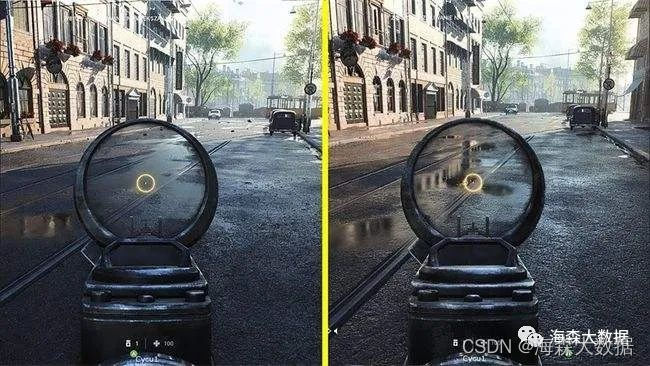Recently, a game called "Black Wukong" has been on the hot search. The game supports 4K RTX ON light pursuit + NVIDIA DLSS technology, so what is light pursuit technology and DLSS, and what is the difference between them?

1. Ray tracing technology
Ray tracing is a rendering technology that uses algorithms to simulate the physical characteristics of light in the real world. It can achieve physically accurate shadows, reflections, refractions, and global illumination. In virtual game scenes, objects in the game can More realistic. It can make the game have a movie-level picture quality, make the flames, smoke and explosions of war movies look more realistic, and give users an immersive feeling. "Although it can bring more realistic effects, it also requires very high graphics card performance. On August 14, 2018, SIGGRAPH, the top conference on computer graphics, was held in Vancouver. Nvidia officially launched the world's first real-time ray tracing technology. New graphics card family NVIDIA Quadro RTX.
Simply put, ray tracing technology allows you to experience light and shadow effects that are closer to reality in the game, such as reflections in water and reflections on car bodies.
2. DLSS
DLSS is a deep learning supersampling technology. It is the latest RTX technology. Currently, it is only supported by RTX series graphics cards. It can train the GPU to render clear games through the deep learning and AI functions of Tensor Core (tensor computing core) Image, it will first generate 8K image from 1080P, 2K for the model of game image, and then shrink back to 4K to get 2X DLSS effect.
That is to say, it can use low-resolution images (such as 1080p) to generate high-resolution images (8K), and then shrink the 8K images back to 4K to obtain super-sampled anti-aliasing (SSAA) images to replace traditional temporal anti-aliasing techniques .
DLSS occupies less resources. When the DLSS function of the graphics card is used, the resources occupied are probably the resources used for normal rendering of 1080P.
What's really special about DLSS is that it's the first AI algorithm to simultaneously produce stable images without juddering artifacts. Each game can capture high-quality image sequences, avoid the high cost of real-time rendering, and the game rendering is also very fast.
It is also the only image scaling technology that can use deep learning neural networks to ensure image quality comparable to native resolution. Without AI-powered scaling, zoomed-in images can produce unsightly artifacts like motion artifacts, flickering, and dull, fuzzy textures.
When ray tracing is turned on, in theory, no matter what the resolution is, the frame rate can be increased after DLSS is turned on, and it will process the image data after ray tracing by reducing the resolution faster than traditional rendering.
This is also the meaning of the two technologies launched at the same time: let the program turn on DLSS after running ray tracing to get a good frame rate.